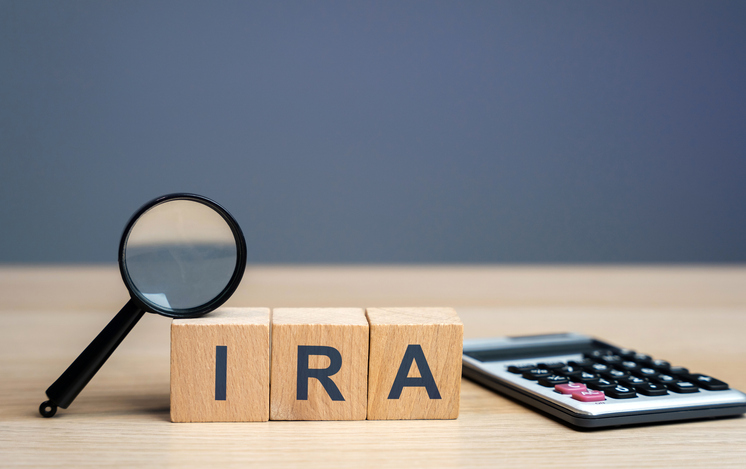If you’re sitting on $1.2 million in a traditional IRA and expect to receive $2,000 per month from Social Security, you may be wondering if that’s enough to retire at age 67. The answer, as always, depends on several factors, such as how long you expect to live, how much you’ll spend and how you manage your portfolio. For many people, this financial setup can provide a sustainable retirement, but it requires thoughtful planning and disciplined spending. Here’s how to evaluate whether retiring at 67 with a $1.2 million IRA and $2,000 in Social Security is enough to meet your needs.
A financial advisor can help you create a personalized retirement income strategy based on your goals and lifestyle.
How Much Income Can $1.2 Million and $2,000 in Social Security Generate?
When planning for retirement, one of the most important questions to ask is how much income your savings and Social Security benefits will actually provide. In this case, having $1.2 million in a traditional IRA gives you a flexible source of income, while Social Security provides a more stable, fixed monthly payment. Together, these income streams can potentially support a variety of retirement lifestyles, depending on how the funds are managed and what your spending needs look like.
To get a sense of what this setup might generate, consider the widely-used 4% rule. This rule suggests that you can withdraw 4% of your portfolio’s value in your first year of retirement, then adjust that amount for inflation each year. For a $1.2 million IRA, that comes out to about $48,000 per year, or $4,000 per month.
Adding in $2,000 per month in Social Security benefits, or $24,000 per year, brings your potential gross annual retirement income to around $72,000.
Of course, the 4% rule is just one possible strategy. If you prefer a more conservative approach, a 3% withdrawal rate would yield $36,000 annually, while a more aggressive 5% rate would produce $60,000. Each option carries trade-offs in terms of risk, longevity and flexibility. Likewise, the way your portfolio is invested will also influence how sustainable those withdrawals are over time.
Social Security Considerations
At age 67, most individuals reach their full retirement age, meaning they can claim their full Social Security benefit without any reduction. For those who find that amount falls short of their needs, there’s an option to increase it by delaying Social Security.
For each year you delay claiming benefits past age 67, your monthly Social Security payment increases by about 8% per year, up until age 70. After that point, benefits no longer increase, so there’s no financial incentive to delay further.
If you expect to live well into your 80s or 90s, waiting to claim could result in significantly more income over the course of your retirement. If you experience a shorter lifespan, you may have gotten more in benefits by claiming sooner.
Delaying Social Security also offers another potential advantage. If you continue working, even part-time, you may be able to postpone drawing from your IRA or other retirement accounts. This could allow your investments more time to grow, potentially increasing the size of your nest egg and improving the sustainability of your future withdrawals.
Of course, this approach isn’t right for everyone. If you’re facing health challenges or simply prefer to stop working at 67, claiming your benefit sooner may make more sense.
Longevity and Health: Planning for a Long Retirement
When considering whether your savings and Social Security benefits will support retirement at 67, it’s also helpful to factor in how long that retirement might last. While no one can predict the future, average life expectancy statistics can help you plan.
More than 20% of men and almost 19% of women will not live to 67, according to Social Security life table figures. However, once reaching 67, a man can expect to live until about age 84, while a woman the same age has an average life expectancy of around 87. And keep in mind that these are just averages; many people will live well into their 90s, and some beyond 100. That means a retirement lasting 25 to 30 years or more isn’t out of the question.
Planning for longevity is about more than just having enough income. It also means preparing for rising healthcare costs. Even with Medicare coverage, retirees often face out-of-pocket expenses for premiums, prescriptions and procedures not covered by insurance. And for those who may eventually need assistance with daily living activities, long-term care can become a major financial burden, one that isn’t typically covered by Medicare.
Investment Strategy: How You Allocate Your IRA Matters
Your investment strategy in retirement can have a significant effect on how long your savings last. While Social Security provides a consistent monthly payment, your IRA is a variable income source, meaning your returns (and your risks) will depend heavily on how the money is invested.
Here are a few common asset allocations and how they may influence your income and security in retirement:
- Cash (very conservative): Keeping your savings in cash or cash-equivalents (like savings accounts or CDs) offers stability, but very little growth. With inflation, this approach can lead to a slow erosion of purchasing power. For someone retiring at 67 and planning for a 25- to 30-year retirement, relying heavily on cash could raise the risk of outliving your money.
- Bonds (moderately conservative): A bond-heavy portfolio offers more income potential than cash and is generally less volatile than stocks. At current interest rates of about 4%1, a $1.2 million portfolio heavily invested in bonds could produce roughly $40,000 per year in interest income, depending on bond types and yields. This approach may provide more stability, but it may still struggle to keep pace with inflation over decades.
- Stocks (growth-oriented): Equities offer higher long-term returns, with the S&P 500 averaging around 10% annually over time. However, markets fluctuate year to year, and retirees withdrawing during a downturn may face “sequence of returns” risk. This is where losses early in retirement can significantly impact future income. Stocks may help combat inflation, but they require careful planning and a tolerance for volatility.
- Annuities (guaranteed income): An annuity is a product you purchase from an insurance company in exchange for guaranteed income for life. A single premium immediate annuity (SPIA), for example, might offer a fixed monthly payout starting immediately. While annuities remove market risk and provide peace of mind, they also typically involve surrendering access to the principal, making flexibility and liquidity a concern.
- Mixed strategy (balanced portfolio or bucket approach): Many retirees use a 60/40 portfolio (60% stocks and 40% bonds) or a bucket strategy, in which assets are divided into short-, medium- and long-term investments. These methods aim to balance growth and income while reducing risk over time. A well-diversified approach may help maintain purchasing power, smooth out returns and provide flexibility to adjust withdrawals during market fluctuations.
Spending and Lifestyle Expectations in Retirement

If your combined retirement income from IRA withdrawals and Social Security totals around $72,000 per year, the question becomes: Will that be enough to support your lifestyle?
The answer will depend on your spending habits, location and personal goals. Some retirees find this income provides a comfortable standard of living, especially in areas with a moderate or low cost of living. Others, particularly those in high-cost urban areas, may find that it requires careful budgeting.
Here are some of the most significant spending categories to consider:
- Housing: Even if your mortgage is paid off, you may still face property taxes, insurance, maintenance and possibly HOA fees. For renters, monthly costs may rise over time.
- Healthcare: Medicare covers a portion of medical expenses starting at age 65, but it doesn’t cover everything. Out-of-pocket costs can include premiums, co-pays, dental care, vision, prescriptions and supplemental insurance.
- Travel and Entertainment: Many retirees hope to enjoy more leisure time, which often means higher spending in the early years of retirement on things like travel, dining out, hobbies or seasonal living arrangements.
- Taxes: Income from retirement accounts is often subject to federal and sometimes state taxes.
- Everyday Expenses: Food, transportation, clothing, technology and home services are ongoing costs that may not change much from your working years.
It’s also worth thinking about regional cost-of-living differences. For example, $72,000 may stretch further in smaller cities or rural communities than in coastal metro areas. Using a calculator such as SmartAsset’s cost of living comparison calculator or reviewing spending patterns in your current area can help you gauge whether your projected income is likely to cover your needs.
Don’t overlook inflation, either. Even a modest inflation rate can erode purchasing power over a 25- to 30-year retirement. Assuming that inflation averages just 2.5% annually, an expense that costs $3,000 today could rise to more than $5,000 in 25 years. Planning for rising costs, especially for healthcare and essentials, can help you preserve your financial flexibility over time.
Taxes on IRA Withdrawals and Social Security
One of the biggest differences between income from a retirement account and income earned while working is the way it’s taxed. With a traditional IRA, your contributions were made pre-tax, which means all withdrawals in retirement are considered ordinary income and taxed accordingly. This includes any interest, dividends or capital gains the account has generated.
Depending on how much you withdraw each year, your income may place you into a higher tax bracket than expected. For example, withdrawing $48,000 annually from your IRA combined with $24,000 in Social Security benefits could place you in the 22% federal tax bracket as a single filer, or 12% to 22% as a married couple, depending on your filing status and other income and deductions.
But it’s not just the IRA withdrawals that are taxed. Social Security benefits may also be taxable, depending on your combined income. The IRS uses a formula called “provisional income,” which includes your adjusted gross income (including IRA withdrawals), any tax-exempt interest, and half of your Social Security benefits.
- If your provisional income exceeds $25,000 (single) or $32,000 (married filing jointly), up to 50% of your Social Security may be taxable.
- At higher income levels, above $34,000 (single) or $44,000 (joint), up to 85% of your Social Security benefits could be taxed.
While Social Security benefits are never 100% taxable, the interaction between account withdrawals and benefit taxation can lead to a higher effective tax burden than retirees may anticipate. To get a clearer picture of your potential tax obligations, it may help to run estimates using a tax projection tool or consult with a financial advisor.
Bottom Line

Can you retire at 67 with $1.2 million in an IRA and $2,000 in monthly Social Security? For many, the answer is yes, but you’ll likely need to manage your money wisely, have a clear understanding of your retirement spending needs, and protect yourself against the unexpected. With a moderate withdrawal strategy and realistic expectations, this plan could provide a stable retirement. If you’re unsure how to build or maintain a plan like this, consider working with a fiduciary financial advisor who can help you navigate the road ahead.
Retirement Planning Tips
- A financial advisor can help you determine when is the best time retire and manage other factors to maximize your benefits. Finding a financial advisor doesn’t have to be hard. SmartAsset’s free tool matches you with vetted financial advisors who serve your area, and you can have a free introductory call with your advisor matches to decide which one you feel is right for you. If you’re ready to find an advisor who can help you achieve your financial goals, get started now.
- Mandatory distributions from a tax-deferred retirement account can complicate your post-retirement tax planning. Use SmartAsset’s RMD calculator to see how much your required minimum distributions will be.
Photo credit: ©iStock.com/PeopleImages, ©iStock.com/Andrii Yalanskyi, ©iStock.com/SeizaVisuals
Read the full article here
















